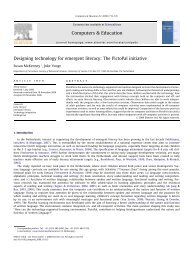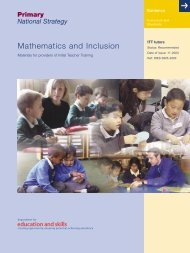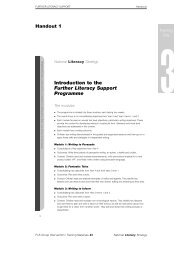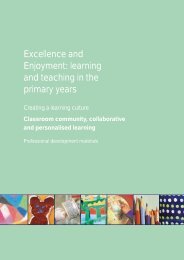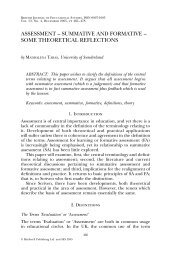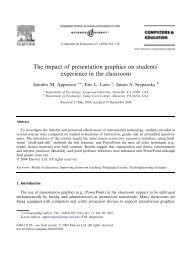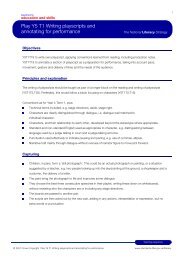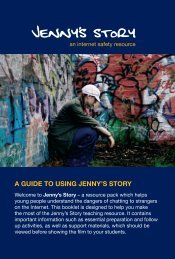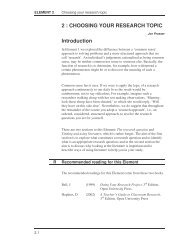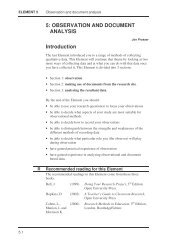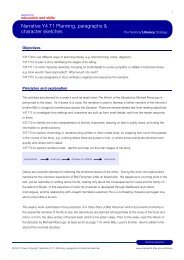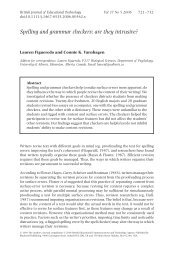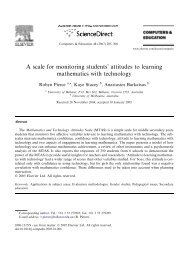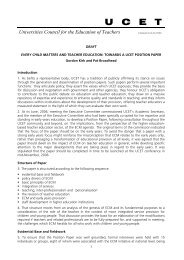Module 2: Written feedback - PGCE
Module 2: Written feedback - PGCE
Module 2: Written feedback - PGCE
You also want an ePaper? Increase the reach of your titles
YUMPU automatically turns print PDFs into web optimized ePapers that Google loves.
help the pupils bridge the gap between present performance and<br />
future targets.<br />
• Research shows that pupils and parents are frequently confused by effort<br />
and attainment grades. Grades encourage pupils to look for ways to get the<br />
best marks rather than find what they need to do to improve their learning.<br />
Effort grades are subjective and can engender feelings of injustice.<br />
• Pupils’ perception of what marks such as A+, C–, 5/10 mean is often<br />
different from what the teacher intended. This is because the mark scheme<br />
or criteria have not been sufficiently shared with the pupils.<br />
• Research on marking reported in Inside the black box: raising standards<br />
through classroom assessment (Black and Wiliam, 1998) indicates that<br />
giving marks to pupils can act as a disincentive. For example, pupils who<br />
receive 2/10 can be disillusioned and the mark can serve to reinforce their<br />
poor performance. Those pupils given 9/10 receive satisfaction but no<br />
incentive to keep improving.<br />
Task B (15 minutes)<br />
Ask participants to skim-read handout 4.2.3, Fiona’s work, in pairs. Tell them<br />
to note the structure – it includes:<br />
• the lesson objective;<br />
• differentiated pupil outcomes;<br />
• the work of one pupil (Fiona);<br />
• the teacher’s response.<br />
Handout 4.2.3<br />
Task B<br />
Handout 4.2.3<br />
Fiona’s work<br />
Handout 4.2.3 cont.<br />
The following example of work is from Fiona’s logbook. All pupils complete this type of logbook<br />
at the end of the week in Key Stage 3. Logbooks provide valuable information about what the<br />
pupils have learned. Some work is marked in detail as indicated below because these items<br />
have been identified as milestones in all pupils’ learning. The objectives are shared with pupils<br />
and the teacher uses the expected pupils’ outcomes to interact with pupils while they complete<br />
their logbooks. This can now be related to the yearly teaching objectives for Year 7.<br />
The lesson objectives are:<br />
To be able to use a simple particle model to explain:<br />
• why diffusion only occurs in liquids and gases;<br />
• what happens when air is heated in a can with a lid.<br />
(These are shared with pupils.)<br />
The expected pupils’ outcome is a way of showing how pupils of different ability may<br />
demonstrate their achievement.<br />
A Uses the correct terminology to describe the sequence of the process when:<br />
• two different gases diffuse;<br />
• air expands and pushes and releases the lid of the can.<br />
This is broadly related to level 4.<br />
B Explains using a simple particle model or using drawings:<br />
• how the particles in a gas are constantly moving, bumping into each other and the walls of<br />
the container. When two gases are brought together such as bromine and air, the particles’<br />
continual movement allows them to gradually mix together. By the end, the particles of air<br />
and bromine have completely mixed. This process occurs independently of the density of<br />
each gas. Start to relate the process of diffusion to liquids.<br />
• how air expands when it is heated. The particles move faster and faster as the temperature<br />
increases. Finally, the number of collisions on the lid is too great and it is released.<br />
This shows aspects of the yearly teaching objectives for Year 7 and is broadly related to level 5.<br />
C Is confident in explaining all the outcomes broadly related to level 5. In addition can explain or<br />
use drawings to show:<br />
• why the structure of the solid prohibits the process of diffusion occurring;<br />
• how the increase in energy of the air particles is linked to the increase in the number of<br />
collisions between particles and the walls of the can. This increases the force on the walls of<br />
the can and its lid. Finally, the force is strong enough to release the lid.<br />
This shows aspects of the yearly teaching objectives for Year 7 and is broadly related to level 6.<br />
Say that it is important to highlight that not all of the pupils’ work is marked to<br />
this level of detail. The science department identifies key objectives in their<br />
scheme of work that represent milestones in pupils’ learning. These<br />
milestones are assessed and marked in detail shown in Fiona’s work on<br />
diffusion. Other ongoing work is acknowledged in different ways, clarified in the<br />
school’s assessment and <strong>feedback</strong> policy.<br />
After 5 minutes, ask for comments about the science teacher’s <strong>feedback</strong>.<br />
Show slide 4.2.6 to conclude, elaborating with the following points<br />
as necessary.<br />
6 Whole-school development in assessment for learning | Presenter’s Notes © Crown copyright 2004



